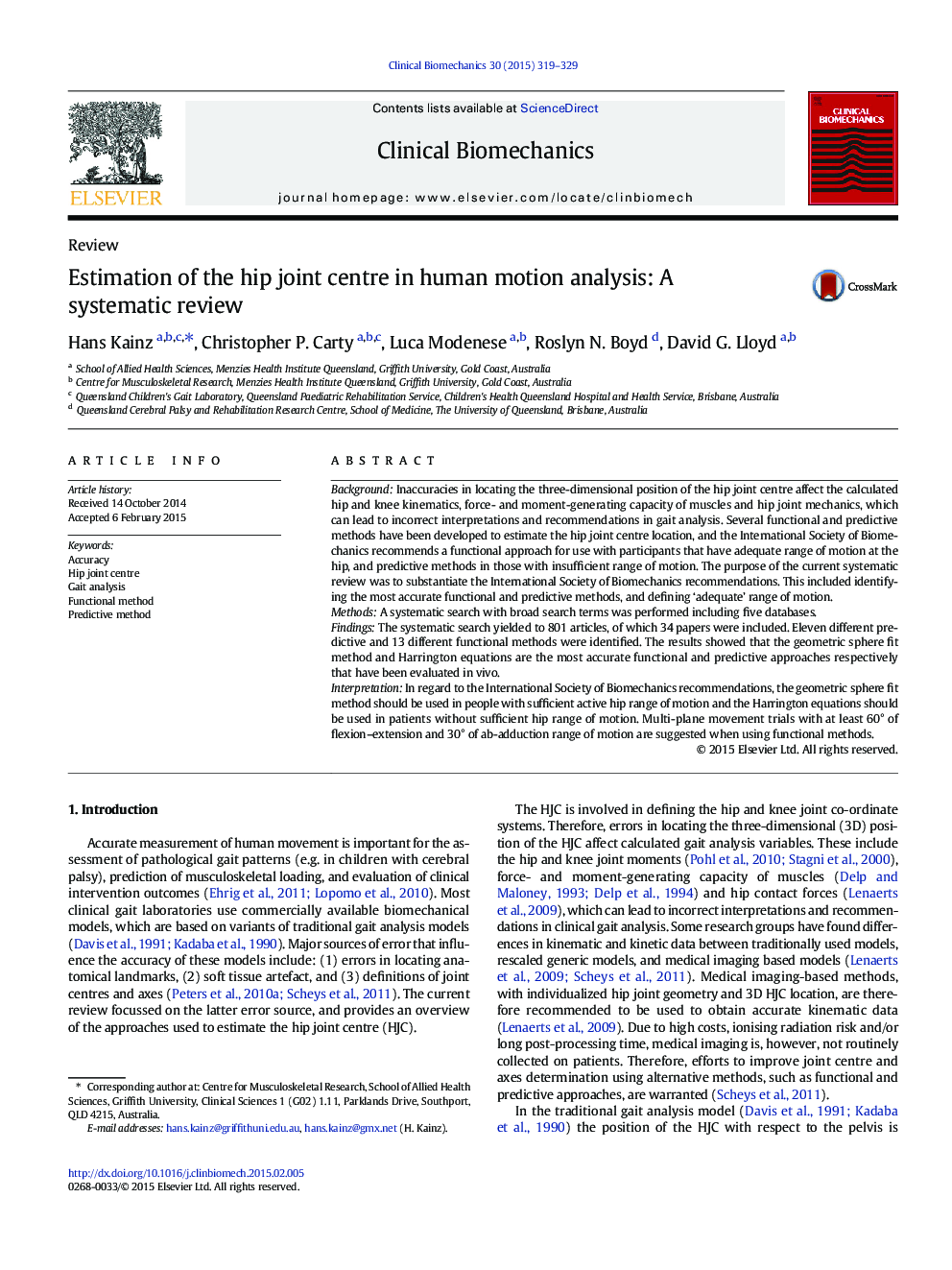| Article ID | Journal | Published Year | Pages | File Type |
|---|---|---|---|---|
| 6204740 | Clinical Biomechanics | 2015 | 11 Pages |
â¢We summarized currently used methods to estimate the hip joint centre.â¢Geometric sphere fit method is the most accurate functional method in vivo.â¢Multi-plane movement trials are suggested when using functional methods.â¢Harrington equations are the most accurate regression equations in vivo.â¢Simulated soft tissue artefacts do not mimic the in vivo condition.
BackgroundInaccuracies in locating the three-dimensional position of the hip joint centre affect the calculated hip and knee kinematics, force- and moment-generating capacity of muscles and hip joint mechanics, which can lead to incorrect interpretations and recommendations in gait analysis. Several functional and predictive methods have been developed to estimate the hip joint centre location, and the International Society of Biomechanics recommends a functional approach for use with participants that have adequate range of motion at the hip, and predictive methods in those with insufficient range of motion. The purpose of the current systematic review was to substantiate the International Society of Biomechanics recommendations. This included identifying the most accurate functional and predictive methods, and defining 'adequate' range of motion.MethodsA systematic search with broad search terms was performed including five databases.FindingsThe systematic search yielded to 801 articles, of which 34 papers were included. Eleven different predictive and 13 different functional methods were identified. The results showed that the geometric sphere fit method and Harrington equations are the most accurate functional and predictive approaches respectively that have been evaluated in vivo.InterpretationIn regard to the International Society of Biomechanics recommendations, the geometric sphere fit method should be used in people with sufficient active hip range of motion and the Harrington equations should be used in patients without sufficient hip range of motion. Multi-plane movement trials with at least 60° of flexion-extension and 30° of ab-adduction range of motion are suggested when using functional methods.
